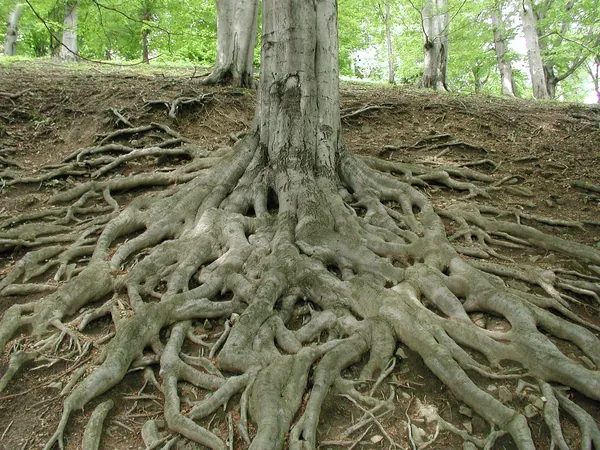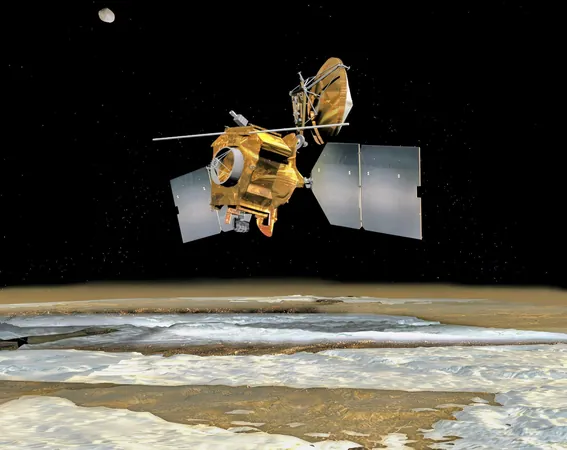
Plants Surprise Scientists: Discovering Deeper Roots Could Revolutionize Carbon Storage
2025-06-17
Author: Michael
In a groundbreaking study that may shift our perception of plant biology, scientists have discovered that many plants and trees develop a second layer of roots—surprisingly extending over three feet underground. This revelation challenges the long-held belief that root systems diminish with depth, raising intriguing questions about how these plants draw vital nutrients and, crucially, store carbon.
The research, published in the prestigious journal Nature Communications, unveils uncharted rooting patterns that could drastically alter our understanding of ecosystem resilience amid climate change.
As the world grapples with record-high CO2 levels, this study offers a glimmer of hope. Deeper roots may facilitate the transportation and storage of fixed carbon more effectively than previously recognized. Mingzhen Lu, an assistant professor at New York University and the study's lead author, emphasizes the importance of these findings for climate mitigation.
"If plants can store carbon deeper underground, this might protect the carbon from being released back into the atmosphere by microbes during harsher conditions," explains Lu. He warns that traditional ecological studies often overlook these deeper layers, potentially missing a natural solution for carbon storage.
The researchers tapped into the extensive data from the National Ecological Observatory Network (NEON), which provides soil samples collected from a remarkable six-and-a-half feet deep. This depth is significantly beyond the typical one-foot threshold commonly used in ecological research, allowing scientists to identify new root patterns across different climates and ecosystems—from the icy expanses of Alaska to the lush jungles of Puerto Rico.
Focusing on key questions about root abundance, distribution, and nutrient exploitation, the findings revealed that nearly 20% of the examined ecosystems exhibit a fascinating characteristic known as bimodality—where root systems peak twice as they descend into the soil. This not only signifies additional nutrient-rich layers but also highlights previously unknown adaptation strategies of plants.
"While we utilize advanced technologies for aboveground observation, our understanding of belowground systems has been sadly limited. It’s like having eagle vision above and mole vision below," Lu points out.
Adding another layer of complexity, co-author Avni Malhotra indicates that deep roots might enhance soil carbon storage under certain conditions but could also lead to carbon losses in other scenarios due to increased microbial activity.
This pioneering exploration into deep rooting patterns opens exciting avenues for future research, with implications for nutrient flow, water cycling, and the long-term potential for carbon storage in our soils. Lu urges scientists and policymakers to investigate these overlooked depths, suggesting that deeper soils could be critical in shaping our understanding of ecosystems in a rapidly changing climate.
The optimistic outlook? Nature may be already playing an invaluable role in combating climate change through its plant life. We simply need to dig deeper to unleash their full potential.









 Brasil (PT)
Brasil (PT)
 Canada (EN)
Canada (EN)
 Chile (ES)
Chile (ES)
 Česko (CS)
Česko (CS)
 대한민국 (KO)
대한민국 (KO)
 España (ES)
España (ES)
 France (FR)
France (FR)
 Hong Kong (EN)
Hong Kong (EN)
 Italia (IT)
Italia (IT)
 日本 (JA)
日本 (JA)
 Magyarország (HU)
Magyarország (HU)
 Norge (NO)
Norge (NO)
 Polska (PL)
Polska (PL)
 Schweiz (DE)
Schweiz (DE)
 Singapore (EN)
Singapore (EN)
 Sverige (SV)
Sverige (SV)
 Suomi (FI)
Suomi (FI)
 Türkiye (TR)
Türkiye (TR)
 الإمارات العربية المتحدة (AR)
الإمارات العربية المتحدة (AR)